My thoughts and impressions after a month in Japan | part 1
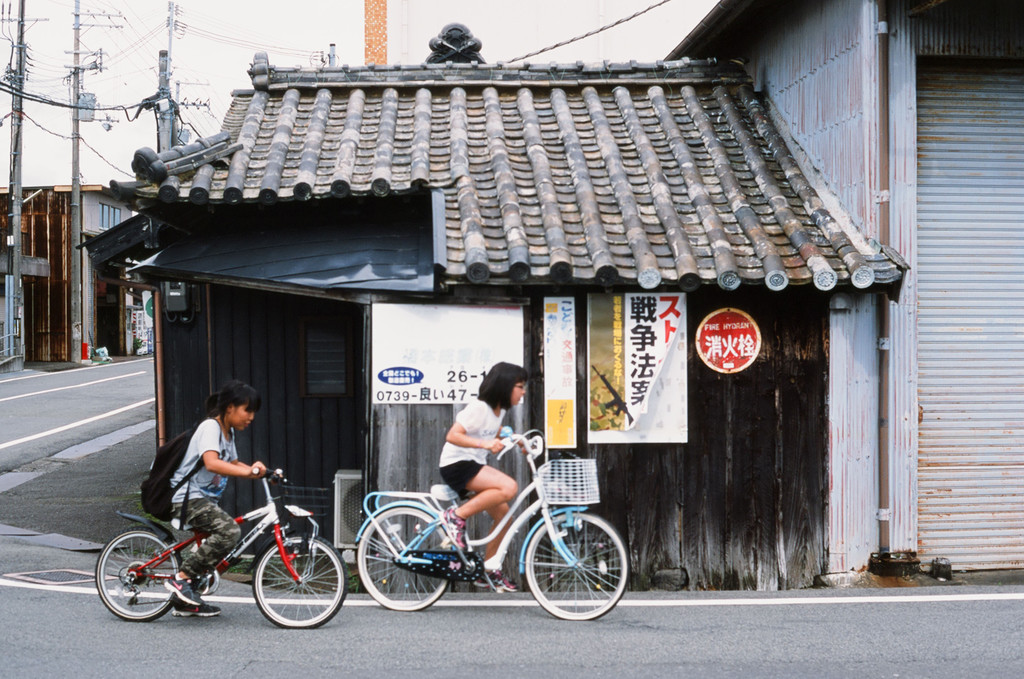
It has been practically half of the year since I came from Japan and despite writing on my tumblr blog earlier about first few days there and on my Facebook profile in Croatian I have never written about my living experience in details in English. What is more, I am going to try to compare every segment of it to the life in Croatia and when possible to Austria (since I am right now living there).
When, why and where?
Just to remind those have not heard about my experience. I spent a period from 2nd July till 29th in Japan with Lions Club. Due to the rules of the youth exchange this was likely my last chance to run in the airplane for Japan. I'm very glad that it happened in 2015 after already having two exchange experiences two summers earlier... and also the events that occurred in summer 2015 happened to send me to a place where I really enjoyed my time and met dear people.
In the first two weeks I had the opportunity to stay at 4 different host families who were very kind with the help of their friends and the local LC to show me the ordinary life in Japan, learn about the culture and people, and did everything to make my stay there pleasant. And they did more than they think. The the other week and a half was in the youth camp with more than 20 young people from different countries. The camp was pretty dynamic and we had tons of fun... as you will see in other posts. I returned home with an unique experience that not many had a chance to experience and new life-long friendships. Japan is truly a planet for itself and it feels like a dream and unreal that 6 months earlier I was riding a bike on my way to the restaurant I worked at and greeted with 'Ohayo gozaimasu' people in the streets.... But more about it within my other posts here.
Japan is an island country with the population of approximately 128 million people. Around 70% of the surface are the mountains with lots of forests and it is surrounded by the Pacific Ocean.
As for the locations... my life in the host families was in the town of Gobo in the Wakayama prefecture which is again part of Kansai region with it's center - Osaka.
- GOBO
It situated on the main island - Honshu and was built in the south of Wakayama prefecture on the shore of the Pacific ocean along the both sides of the river Hidaka. It's also relatively close to Shikoku island which can be seen far in the distance when on the beach. Gobo is a relatively new town with a relatively small population when compared to big cities. It was built in 1954 and has a population of around 23 thousand citizens. Horticulture is of the importance for this city. And you can guess that there are no big skyscrapers and other things many of you might think of from watching animes. It seems quiet peaceful and that everything works in harmony.
I love the place and my journey both started and ended there, met so wonderful many people and visited several institutions, had my first experience working in a restaurant, learning Japanese, first shopping (even alone with the help of dictionary), my local LC that organized several parties in honor of my stay there with them, where I learned about the temple's and philosophy of Japan, where I learned how to eat the Japanese food (and still avoid the proper handling of the chopsticks), my first experience with the Japanese educational system, were I played Japanese drums and volunteered in the preschool, where I had the freedom to go on my own by bike and headphones around the place, my first photographs and memories all originate in Gobo.
I might add the city of Wakayama where I watched the baseball match and had lunch with my host families. It has a population of around 300 thousand citizens but it's also without skyscrapers. More about the description of the towns after the intro post.
- OSAKA
While being in the youth camp we spent 3-4 days or nights in Osaka. It is the biggest city I have ever seen with my own eyes and been so far in my modest life. I remember arriving to Osaka Kansai (KIX) airport but what I saw was not Osaka but the smaller satellite town. Now when I went with my host mom there I just didn't know how to feel with what I see in front of me. The coastline which is actually at least several kilometers... wait.. haha several...at least 30-40 km from the airport till the main river of Osaka. I'm having a headache right now when I think about it. Industrial zone. Tons of iron constructions, ships, factories... dozens of huge stores and depositories for Amazon and other giants. And then you see lots of skyscrapers but before you pass them you notice that there are several highway tracks and they go each under another. Just like in animes! The highway also goes like snake around the skyscrapers and other buildings. There are several rivers running through the city where the main one is the Great Yodo river. They will be of mentioned later during one of the most important and famous festivals in Japan and especially of Osaka and its region - Tenjin Matsuri (Festival of the Gods).
Osaka itself has a population of around 2, 8 million people while in total the metropolitan area has the population of 19 million making it one of the largest metropolitan areas in the world (and the 2nd one in Japan after Tokyo)! In Osaka we visited one temple and practiced for the first time Zazen, went to the amusement park Universal Studios Japan... I have to say I didn't feel or notice the crowds in the streets except for our little group from the bus.
- HIROSHIMA
We spent a day and one night in Hiroshima. No need to explain much the story in the history of this place. But to remind you - during the Second World War the first atomic bomb was dropped on Hiroshima on August 6, 1945 in which directly or as a consequence of the radiation or explosion died more than 100 000 citizens. Hiroshima is today a nice place and the danger of radiation today is minimal, as same as in Zagreb so no worries. It is now a home to a bit more than 1 million citizens. It is situated in the westebuddhrn region of the island Honshu, around 6 hours by bus from Osaka. The name itself means 'Wide island' and it has an interesting history of which I read about in the book we got as a present from the Peace Memorial Center. Hiroshima was settled at the end of the 16th century on the river delta and throughout the history was very important in terms of military (including the WW2). Close to Hiroshima is the Miyajima sanctuary, one of the most important places of its kind in Japan with its iconic red-orange 'torii' standing above the sea.
There were some other places where we spent a night and a day such as Shirahama and some places with the temples where we stayed in the traditional hotels sleeping on the floor. They are not the town or cities though but still had an equal impact on my impressions.
Now it's time to start with the facts.
1 The Japanese in general? What are they like?
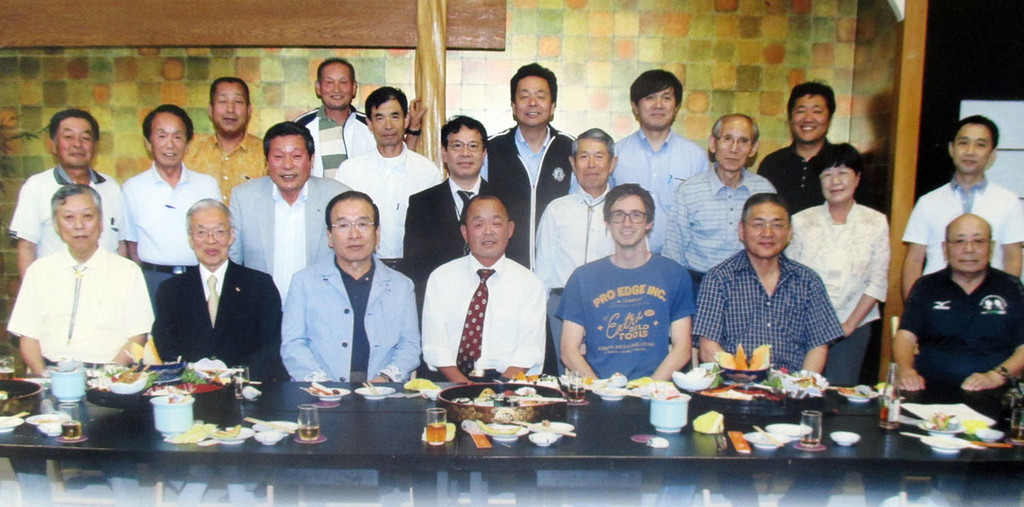
The stereotypes you've heard about the Japanese as of very polite and hospitable people are... true. Which then makes them no longer stereotypes. Here are some of the useful phrases and expressions that are being used in conversations that you will need to know.
To greet someone you will have to bow (there are different ways of bowing depending on what you exactly want to express or depending on the social relations between the greeters) and there are few ways to say 'please' and 'thanks' depending on context. So there you have kudasai, onegaishimasu and douzo to say 'please' and similar is with 'thank you' where you have formal arigatou gozaimasu and arigatou gozaimashita to thank for something done in the past, respectively.
What I noticed was they were apologizing for every trifle which they considered to be inappropriate, not a good manner. That is much more nwo than in Croatia, where on contrary it was a bit a shocking where instead of I am sorry you hear jeb'se (don't look for translation... ). Thus you can hear a lot Sumimasen (Excuse me) or Gomen nasai (I am sorry) or just Gomen gomen.... (my favorite, you have to say it 10x in a row :D). Sometimes it might sound funny to us "from the West" when they do it lots of times (especially when there is a group of people, imagine that situation, and everyone does it ten times)... but that's how the things function, from youngsters to seniors. I don't think it's bad at all. Just shows how much respect they show towards each other and are likely to be good citizens later. I remember when entering shops or attending some formal meetings where within few seconds I heard 50x 'thanks, please, i am sorry, nice to meet you' and bowing a few times.
Showing respect
I would like to tell you a bit more about this. There are few ways again to show respect towards the others, but I will just show you what I had been hearing almost all the time. I myself was addressed to as Gurego-san. Thus the names are given the suffixes -san (regardless of gender), and there are often -kun and -chan in use referring to addressing the younger population, in general the male children, teenagers or friends and -chan for diminutives, generally for females, babies, children, grandparents but also animals, close friends and so on. Huh, a long list, right? I would also add the honorary title -sama (even greater respect than -san) for the elderly and senpai which is used for the pupils or students of the higher social/educational status than ours. Thus my older colleague at the University is for me senpai. For teach we use the title sensei which was originally referring to the person who had already had some experience and mastered specific art or skill.
I was joking and playing a lot by adding those those honorary titles such as -san or - sama to the common things, objects or the animals which made my company laugh and later became our joke (thus we had Neko-sama or Mr Cat, Toire-san or Mr Toilet... ). Since I was a foreigner and someone 'new in the neighbourhood' just starting to learn about their culture spontaneously, and since I had no intentions to insult anyone, they didn't mind that but had fun.
Respect can be shown by adding suffixes -masu or -mashita to verbs.
Approachability

The Japanese (at least those I spent my time with) are also very approachable, easy to talk to and make friendships, especially when it comes to asking them for help. They wiill do their best to 'perform their duty' towards you. In contrast to khm.. some of ours (in Croatia) that will not move their *buttocks* when you ask them to do something for you. The kindness and helpfulness is by the Japanese simply some kind of a codex.
Do people steal in Japan?
Oh yeah, I was asked this a lot back home. You must have read some articles on the internet saying that you can leave a phone on the ground in metro and none is going to pick it up and take home. I cannot confirm that but I can confirm that none tried to steal my stuff when I left them in the street, in front of the shop, with my bike. At least in smaller places of course. I would say thefts are as a rule a foreign term in Japan.
I have to admit that I found myself in panic a few times when leaving the bike and my stuff in the basket in front of the house, the restaurant or some shop... and unlocked... but simply nothing happened. And the others were like 'What is the problem? We don't understand. ' Now there are tons of children who go to school by bikes and non of them was ever stolen. As said, thefts are of course plausible in bigger town or cities such as Tokyo or Osaka, but I guess for the relatively small inhabited towns or villages it seems to be impossible.
- I had to be careful not to relax to much after I arrived back to Croatia. It's not going to happen all the time but still it can, sometimes at the most stupid places or totally unexpected. As for Austria, I lost ones the cap of the objective of my camera, went around Vienna for 2 hours to check all the places I was taking photos at... and found it on untouched on the floor in front of my studio. But the bikes are apparently being stolen every night...
How are they behaving in public and what are they like in relationship with other people?
The last thing is related to socialization and interaction with he others. I have a feeling that the arguments are not that common in Japan, at least between the neighbours and other citizens. There are no problems in the streets, there are no crazy drivers (more about it later), but seem to be very disciplined (if you compare them to us) which can be already noticed at the early age at children...
Everyone holds on to some values and rules of behaviour so that any possibility that some problems could occur are minimal. What I noticed (and it's impossible not to notice it when you come from my region) is that they are not occupied with wars and hatred towards the others. I got lots of questions such as 'Do they hate or dislike the Americans because of what they had done to them in the WW2? '. No, I didn't get such a feeling. They don't hate anyone nor show antipathy towards any nation or group of people (regardless of the history). Wars and thoughts on problems are simply not on their to-do list. I guess they all want to live normally in peace and quiet as everyone else who has no problems in the head wants to. But back to our relationship with the others in the society. There are two things to say that might sound contradicting.
Especially during the last day of the this Tenjin Matsuri Festival in Osaka I noticed how much the pay attention to the others, the interaction. Thus almost whole city was on the banks of the river while we were riding on a ferry-boat and they were waving to us and shouting numerous times, clapping and did different rituals. No matter how much they outnumber us in population (Croatia has 4. 3 million people..... ) they seem to be very connected. Big cities seem to be cold and crowded but it is not like that in reality, at least the festivals. They might not be as loud as the Westerns are but they are not alienated from each other too! At least when talking about Kansai region which is said to be much more open and friendly then the north (Kanto region and its center - Tokyo). I never felt uncomfortable in Japan but rather enjoy it so much. I didn't have any problems with being foreign there or to talk to the other people. Everyone was very positive and in a good mood. I think we need something like this at home, there aren't that many events except for concerts or free hot-dogs at the main square that will attract people to interact more with the others rather than with families and a few neighbours.
And the second thing. Showing emotions in public is generally not what you're going to see there. At least not as much as it is with us. If something bad happened to you or something totally awesome, you don't have to show it and express your emotions by jumping, screaming or shouting on the streets. Keep it for yourself. The same goes for the ride in the public transport. One does not talk loud or shouts, does not play loud music. Sounds strange? If you are talking on a phone, there is no need that the whole bus hears you but rather try to talk quietly and keep the conversation short not to bother the others. Again sounds strange? If you are from somewhere around here than it probably does. And they are not swearing as much as we do or try not to at all. At least what I understood it was minimal hehe.

And of course cannot miss to comment this. Questions such as 'Were you the tallest? How tall are they? How did you feel?... ' were very popular. Well, I certainly enjoyed the feel of being the taller one for the most of my time there. In general they can be a head shorter or more than I am. The statistics say women are around 1, 58m and men 1, 7 as an average. Not counting the foreigners I think that within 4 weeks I saw maybe 25-30 taller Japanese, including Gobo, Wakayama, Osaka, Hiroshima and some other. There were some around 2m too. But in 95% of cases it was mostly me being Gandalf surrounded by the company of dwarves, if you want. What made me laugh was of course the shock that I or my family was very tall for their standards since I am an average back home, at least regionally (with my 1. 84m I am below the average for men and women of some regions at home).
I had the problems with the toilets where sometimes I had to crouch.. Also regarding the restrooms or bathrooms, sometimes there was hardly any space for my feet so it was kind of an creative task and challenge to do what you had to do. Or the doors in the apartments that were under 1. 8m so I had to be careful not to hit them with my head. And it happened once! While volunteering in one preschool two little Japanese were running around me holding my hands and I didn't pay attention for a few seconds and this happened while passing through the doors. Another problem I had with my long legs was in the restaurants where we had to sit on the floor and cross the legs under 45 degrees.. I had to stretch my legs under weird angle under the table hoping the others won't fall over it (especially the waiters). On the other hand it was really fun to walk around the town and shopping centers and see none else above my eyes.
Conclusion
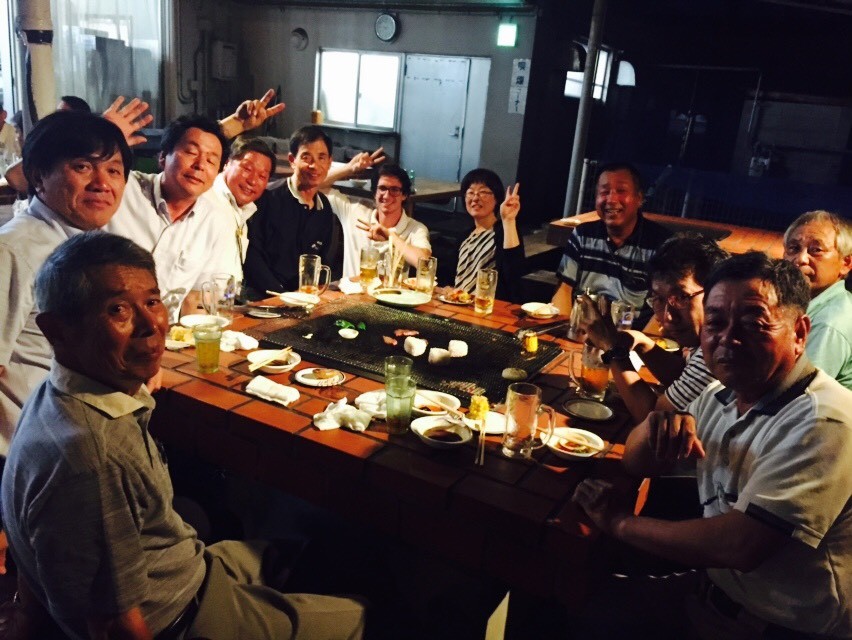
Generally, they are very communicative, curious, fun, open.. from the smallest and youngest to the oldest. Especially maybe since I was a bit 'exotic' (If I may say) they were much more curious to know more about my world and me. I think they are more open and seem to be helpful than people here, if we talk of some average. And yes, when they are listening to the others to express their reaction they really do the sounds such as 'uuuu, oooo, ueee, aee, hmmmm'. I picked it up. I find it cool. And they would feel like the locals in Dalmatia (those who've been there know what I mean').
2 The streets and traffic
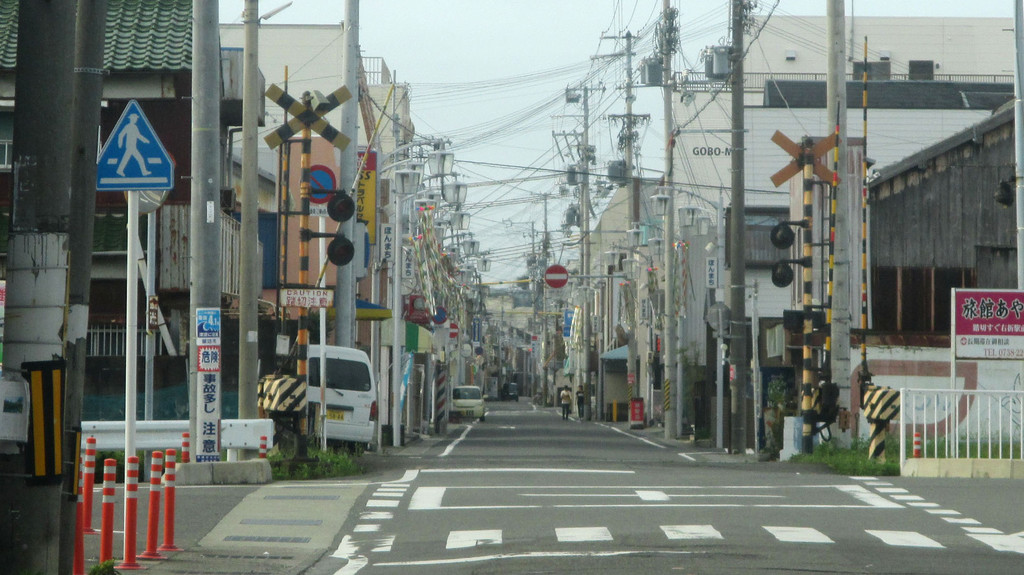
Now this should be interesting. There are three things that had caught my eyes. Those who have followed my photographs will probably guess what I mean.
The first thing is - there are no orange or reddish roofs like we have but black or gray. The houses on the outside are some kind of mixture between modern and traditional, only modern or just traditional Japanese architectural style. If you take into consideration that I had was residing here during the mostly cloudy weather in Japan, and when it was also raining, the cities and towns in the valleys appear to be pretty gray and unhappy. For them it was a small shock and surprise when I showed them the photographs of our places.
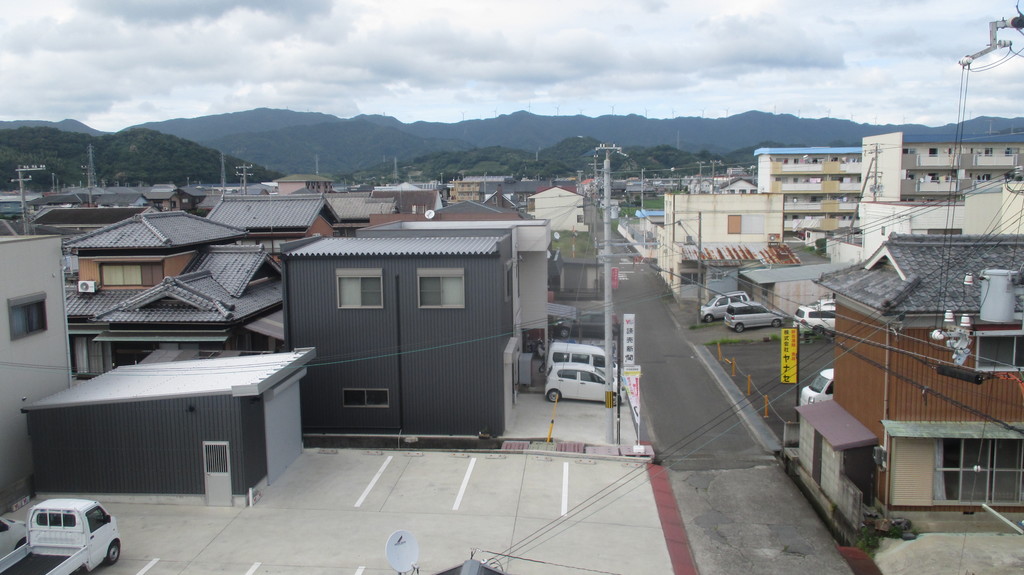
The second thing is - cables everywhere. In contrast with the European streets the cables for the electricity are filling the streets. It is something that cannot be not seen. When you look to the end of the streets, you see the dense network of cables above your head. I don't know what the precise reason for that is but it might be also because of the frequent earthquakes and danger that they are not under the ground. Removing them now would definitely change the picture of the streets there but that wouldn't be the same Japan we are used to.
And the third - the streets through the towns are pretty narrow. What do I mean? When two cars from different directions go towards each other, to by-pass each other they have to slow down (sometimes so much that it looked like they would stop) to do it. I often had a feel that we were going to crash (especially the rear vision mirrors) or fall down the road. Not rarely it was the case that in the smaller towns or places there was a water with planted vegetables right next to the road. So if we crash or do not pay attention while driving we can end up without problems in these plantation of something. A few times while riding a bike in Gobo I had to be careful not to go too close to the edge not to end up with water in my underwear and grass iny my face. (These drain trenches were much closer to the road then it is the case at home where it is usually 1. 5m from the road).
I would just add that there are lots of vending machines to buy drink. And they are much bigger than those we have in Europe!
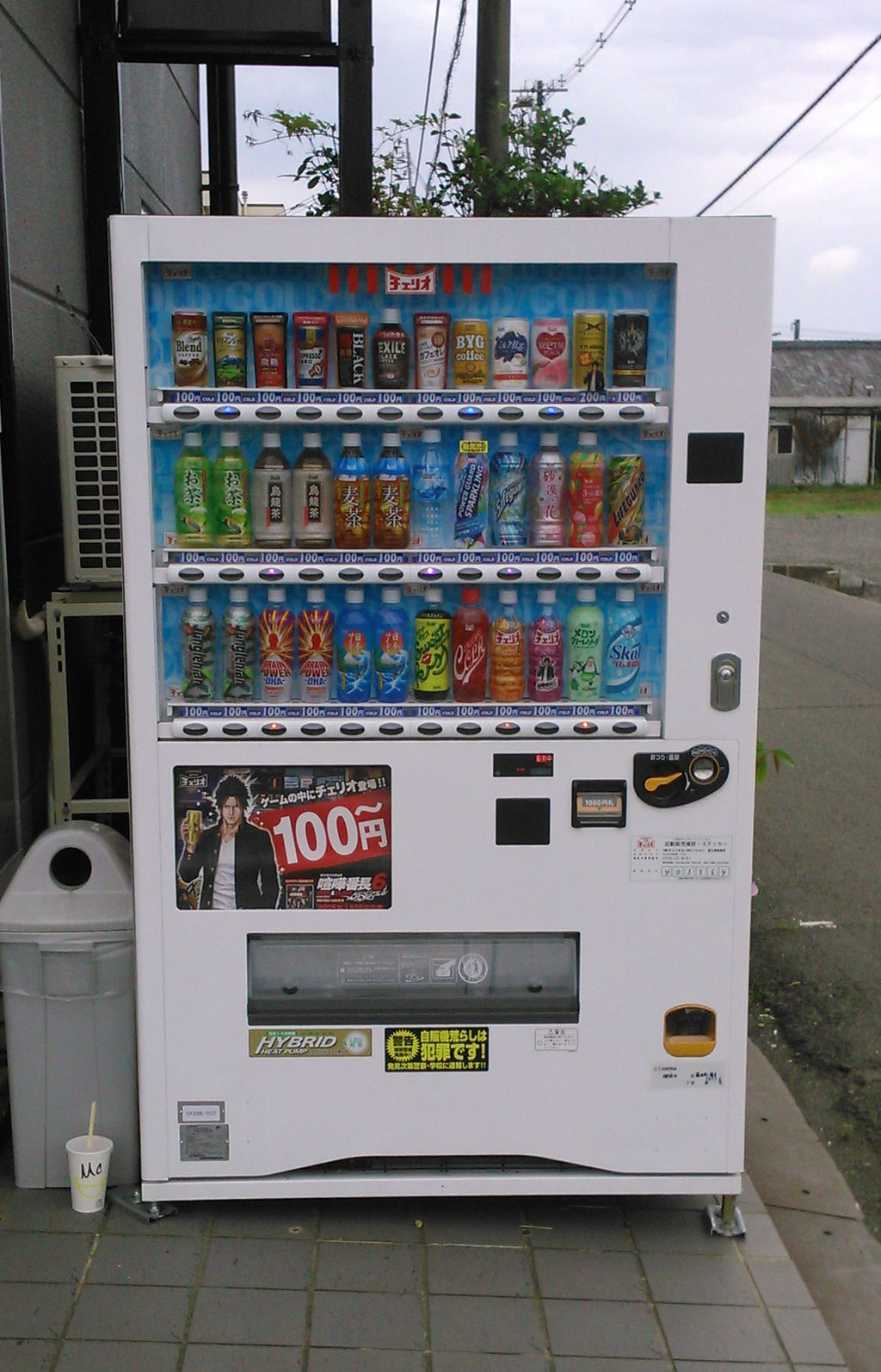
And as said, the drivers are not crazy and I haven't seen nor read about any accident on the road. To be honest, I didn't fear riding a bike on the road along with the trucks and cars at all while going to another town to visit friends. I felt much safe on the road. They just try to avoid you and slow down. However, in Croatia I would have probably been turned into a pancake. haha
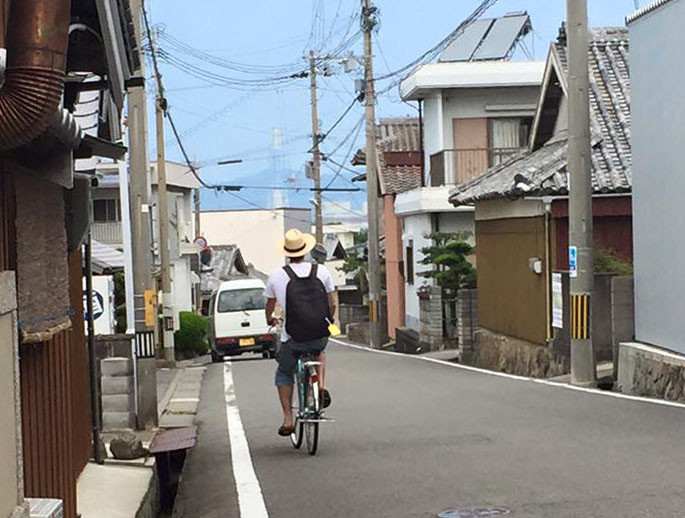
Driving on the left side
I think I have not mentioned yet that in Japan you drive on the left side and the steering wheel is on the right? It was first very confusing for me and kind of a shock, despite knowing about it... but it's totally different when you read about something on the internet (like right now) and being there. Later I got used to it and that I enter the buses from the left and that the driver sits to the right. However though, I forgot it later when I was entering taxi and sat to the right where the taxi driver should be. He was just laughing. This 'phenomenon' might be connected with the logic of reading the texts from right to the left when written in columns. (More about it later)
Black and white world
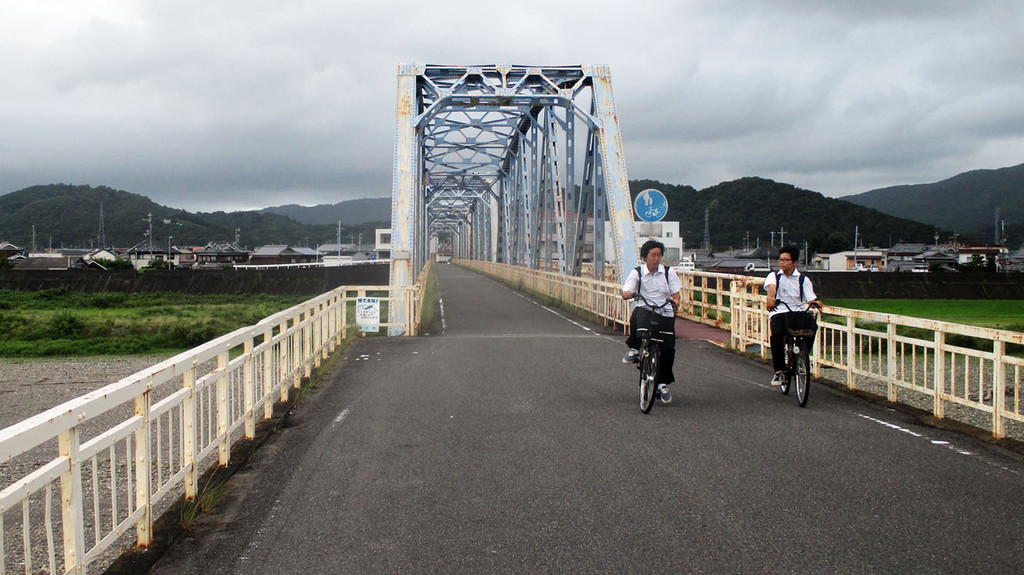
Talking about the cars, over 90% of them are black or white. And dicey, cube-like, very geometric with not that many oval shapes. Many of the seemed to be much smaller than the cars we have here and with some I again had the problems not to hit my head up. At some I had to "shrink" somehow myself when sitting. Also, lots of cars are pretty normal or better - modest. The brands are not of importance here and as you can guess almost all of them are produced in Japan. And they don't need something bigger (since they are most likely going to be used only in Japan, who cares what your car looks like if it's good). All the cars are probably equipped with GPS and those more luxurious ones had screens in front and the back. Thus were my little host brother watching anime on the back seats. I might as well add to our black&white world the same "colored" uniforms of the students. More about it later.

So, there are more colors in one street in my hometown than in all the streets I saw in Japan. And in Croatia it is still of importance for some what kind of car you have, it represents kind of social status and it's funny that people care more about their cars (that they look better than the neighbour's one... or to attract the females) rather than about their homes (which, let's be honest, look sh*ty, most of the facades and interiors... ). That's one of the differences in the mentality between these two cultures.
4 Cleaning and recycling
Speaking of streets there is something else that has to be mentioned. I noticed there were barely any trash or recycle bins on the streets. They are rarely seen in the towns or cities. While riding a bike in Gobo I do not remember seeing anywhere single trash bin. And the streets are generally very clean and without trash around. How come is that possible? Again I would say that is is about the culture and social behaviour. You will simply take the garbage or rubbish with you home and put it into one of the boxes used for recycling of the waste. I asked myself several times how come an island country with over 100 million inhabitants and not so much space to allocate waste on the streets is much cleaner and relatively eco-friendly than 4 million of us with tons of parks and streets that are full of trash thrown around the bin but not inside. I was especially feeling embarrassed when going with my Japanese guest in Zagreb and of course the local idiots threw down the trash bin and all the garbage around. I saw more garbage there than in a month in Japan.
Of course, there were a few locations where I saw it but as a rule it does not happen. They don't think of throwing it on the floor. I guess the street-sweepers don't have lots of job to do, at least in the smaller areas. I believe they cannot allow themselves to become overrun by trash as that would have chaotic consequences for the island. But still bugs me that here people are so lazy to take trash with you or just throw it into the (insert rude word) recycle bin when you have 100 of them within radius of 10m.
5. Taking off shoes and houses
If we brought trash back home, before we come to the place to put it for recycling we have to take off our shoes. Sounds quiet simple, does not it?
Upon entering every house there is a small area at the entrance where you leave your footwear. It is usually around 2m square, enough for two persons to take off their shoes at the same time. And they showed me how to do it properly. Once you take off the first shoe, you put your foot on the upper floor and try not to touch the floor down where you're taking off your other shoe. At first I had problems with this forgetting what my feet were doing but after a day I got used to their system.
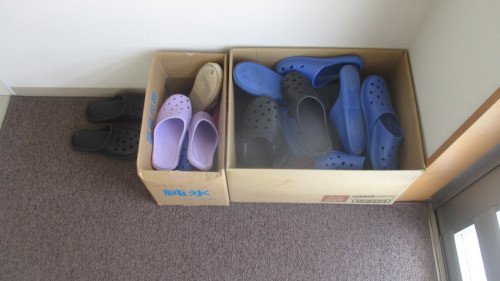
The house, or more precisely - the place where you live, is on a bit heightened floor (for a stair or two) where walking in the shoes is not allowed but only by using slippers. I noticed that numerous properties have a special box or a shoe rack with slippers for guests (even the offices of the architects, if the clients come - no problem, but only with your slippers on). The same rules applies to the restaurants (more about them later). Also, it is not rare that even the bathrooms or restrooms / toilets have their own slippers, so yeah - you have to take off and on the shoes and slippers quiet a lot.
I find it also to be a good practice. Because they want to keep things clean and also hygienic. Unlike them, in Croatia and Austria it can be normal to tell the guests "Oh, no need to take off the shoes, just go with your dirty shoes (and who knows what sh*t did you step into on your way here outside) into the living room or even the bathroom, who cares! ".
I remember arriving the first night at my first house when my heart was still beating of excitement. It was raining when we came and when carrying my huge baggage to the entrance door I tried to keep it in the air all the way so it does not get wet as I presumed it would not be good. But even then my host mother that waited for us asked me not to put the baggage on the floor before she cleans the small wheels. Everything just has to be clean. And why not?
The interior of traditional Japanese houses?
So what about the interior of the Japanese homes? I have had the experience to be in several types of houses. They are either modern interiors similar or same like ours or traditional (more like mixture but with prevailing traditional style). I think you're more interested into the second one.
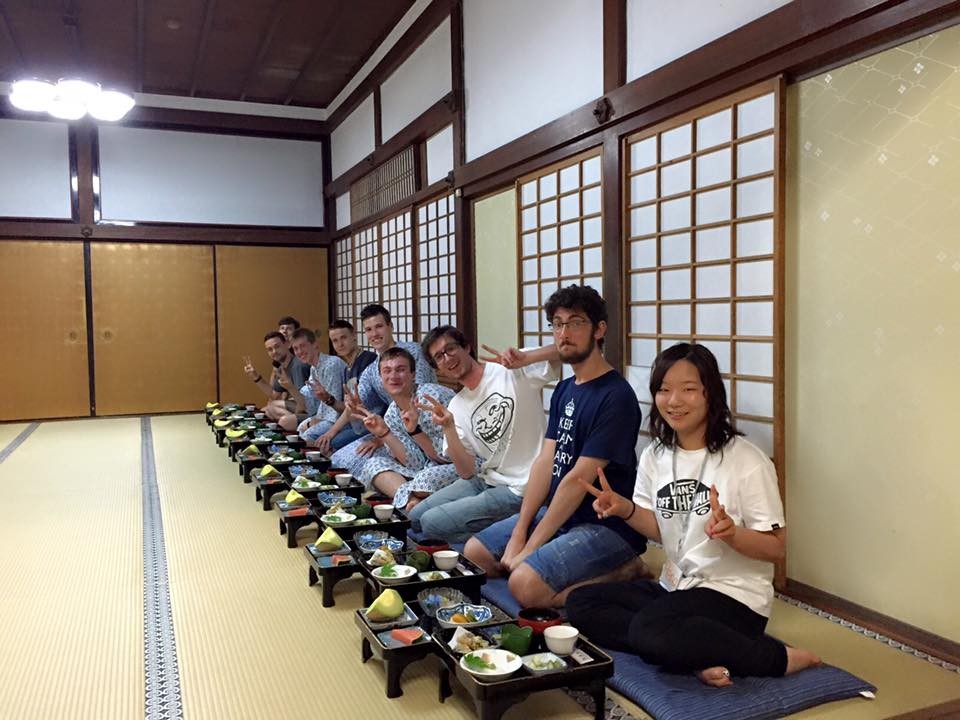
It is not much filled with stuff and furniture (of course, they have wardrobes and the other things but just not as much as we like to put it.. or everything is just simply always cleaned). The doors open and close by dragging in and out. The space seems to be pretty simple, the beds in the rooms are in general the mattresses which can be put into the wardrobes during the day. On the floor there can be low tables where you have to crouch. It was a problem for me because it was primarily created for the shorter guys. Sometimes there is a place in the house for the prayer, that looks like a 'Buddhist altar' (as we'd say... I don't know the actual name) but it is mostly used as a memory with a picture of the family members who passed away. Traditional spaces (principally) have also smaller doors, not rarely I found them to be under 1. 8m. And if there are little kids in the house, especially very (and loud) ones, the chances are quiet big that the rooms will be in a pretty mess with toys all around. But that's same here.
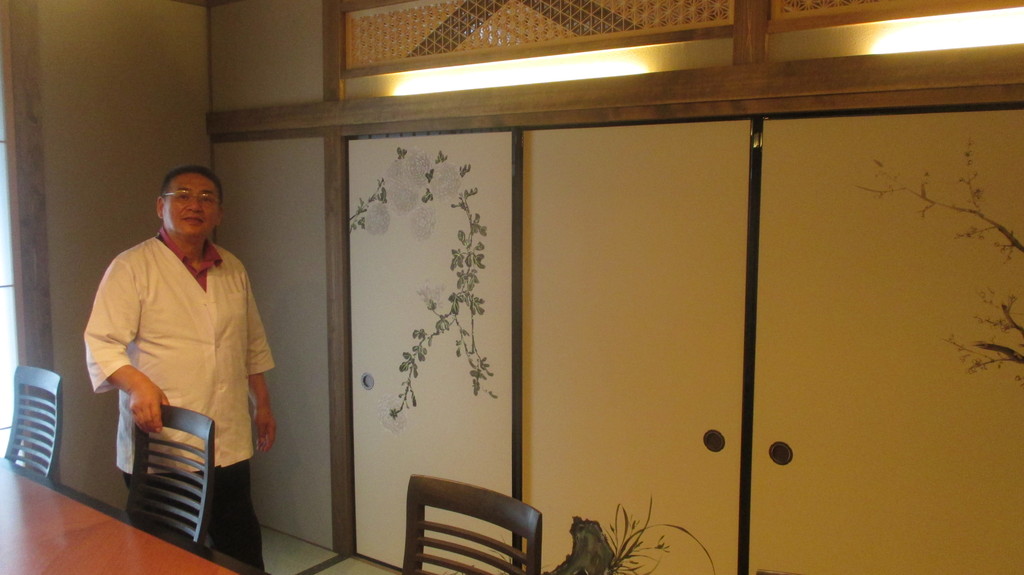
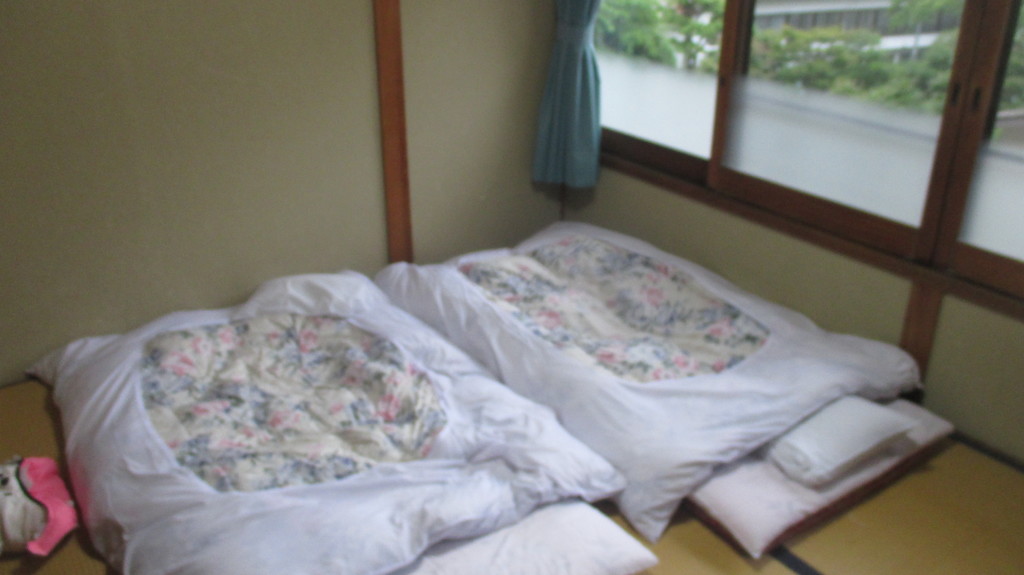
The doors that open by dragging in and out use mostly a light material, somewhat transparent. Also the walls then are not that thick and you can hear the others in their rooms. But this is mostly regarding the traditional homes or hotels. Traditional rooms tend to be much more economical in terms of use of space.
And if you are curious about sleeping on the floor - is it difficult, can you sleep at all, does your back hurt...?... no, it is really a pleasure. You have a mattress which are pretty comfortable. I had no problems with them. And the pillows are great too.
Thanks for reading! I hope you find this interesting. Part 2 coming soon.
Photo gallery
Content available in other languages
Want to have your own Erasmus blog?
If you are experiencing living abroad, you're an avid traveller or want to promote the city where you live... create your own blog and share your adventures!
I want to create my Erasmus blog! →




















Comments (3 comments)
Thank you very much for sharing your experience in Japan. I'm in love with that country (lived there for 3 months) and it's always great to read other experiences. Hope to read more from you! Thanks and enjoy!!!
Thanks Javier, I am glad you liked it and also cool that you have been there and spend more than a month :D (and more of Japan coming soon!)
Thank you for sharing your expertise. Your breakdown added depth to my understanding. I've touched upon a similar subject on illiciumlondon.co.uk/blog, particularly exploring. Let's continue this conversation—looking forward to more of your insights!